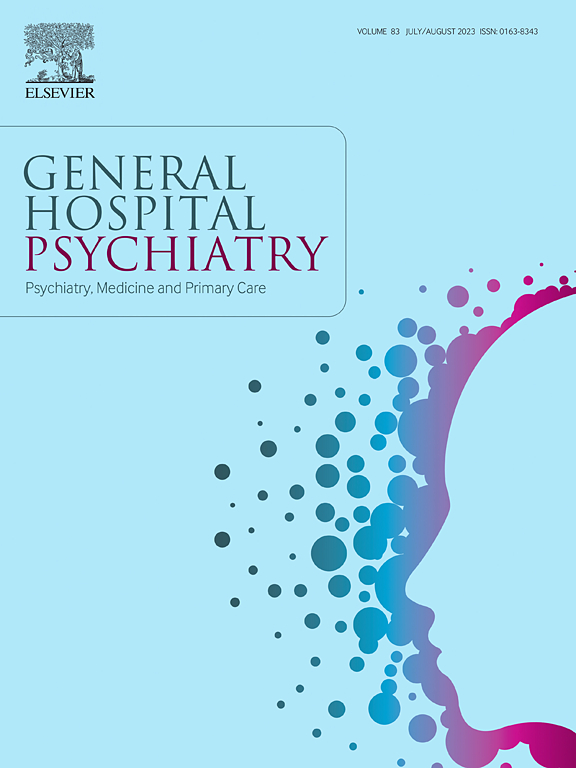住院患者非gaba能催眠药和苯二氮卓类药物与跌倒风险相关
IF 4.1
2区 医学
Q1 PSYCHIATRY
引用次数: 0
摘要
目的:近二十年来引入临床实践的非gaba能催眠药在药理学上被认为具有较低的跌倒风险,但临床研究很少。我们的目的是评估在一家综合医院住院的个体与不同类别的催眠药物(即苯二氮卓类药物、拉美替龙、抗抑郁药和曲唑酮)相关的跌倒风险。方法回顾性队列研究收集2014年4月1日至2019年3月31日在日本某三级综合医院出院的20岁及以上住院患者的跌倒发生率、催眠药物使用、年龄、性别、体重指数(BMI)、日常生活活动(ADL)评分、是否进行手术、急诊入院和救护车使用等数据。Cox比例风险模型用于检查与跌倒相关的因素,并将其他人口统计数据作为协变量进行调整。结果28029例患者中,322例发生383次跌倒。Ramelteon或suvorexant与跌倒发生率升高无关(校正风险比[aHR], 0.78;95% CI, 0.34 ~ 1.81和0.44;95% CI,分别为0.13-1.46),与苯二氮卓类药物相比(aHR, 2.17;95% CI 1.67-2.83)或曲唑酮(aHR, 1.96;95% ci 1.25-3.07)。高龄、较低的BMI、轮椅依赖、非手术状态、没有急诊入院和救护车使用也与跌倒发生率升高有关。结论在综合医院住院患者中,拉美替通和舒瑞康可能不会增加跌倒的风险,而苯二氮卓类药物和曲唑酮的使用需要注意,以减少跌倒的风险。本文章由计算机程序翻译,如有差异,请以英文原文为准。
Risk of falls associated with non-GABAergic hypnotics and benzodiazepines in hospitalized patients
Objective
Non-GABAergic hypnotics introduced into clinical practice within the last two decades are pharmacologically presumed to have a lower risk of falls, but clinical investigations are scarce. We aimed to evaluate the risk of falls associated with different classes of hypnotics, namely benzodiazepines, ramelteon, suvorexant, and trazodone, in hospitalized individuals at a general hospital.
Method
In this retrospective cohort study, data on the incidence of falls, hypnotic use, age, sex, body mass index (BMI), activities of daily living (ADL) score, presence of surgery, emergency admission, and ambulance use were collected for hospitalized patients aged 20 years or older who had been discharged from a tertiary general hospital in Japan between April 1, 2014, and March 31, 2019. The Cox proportional hazards model was used to examine factors associated with falls, adjusting for other demographics as covariates.
Results
Among 28,029 patients, 383 falls occurred in 322 patients. Ramelteon or suvorexant was not associated with an elevated incidence of falls (adjusted hazard ratio [aHR], 0.78; 95 % CI, 0.34 to 1.81 and 0.44; 95 % CI, 0.13–1.46, respectively), in contrast to benzodiazepines (aHR, 2.17; 95 % CI 1.67–2.83) or trazodone (aHR, 1.96; 95 % CI 1.25–3.07). Advanced age, lower BMI, wheelchair dependency, non-surgical status, absence of emergency admissions, and ambulance use were also associated with the elevated incidence of falls.
Conclusions
In hospitalized patients at general hospitals, ramelteon and suvorexant may not increase the risk of falls, while the use of benzodiazepines and trazodone requires careful attention to minimize this risk.
求助全文
通过发布文献求助,成功后即可免费获取论文全文。
去求助
来源期刊

General hospital psychiatry
医学-精神病学
CiteScore
9.60
自引率
2.90%
发文量
125
审稿时长
20 days
期刊介绍:
General Hospital Psychiatry explores the many linkages among psychiatry, medicine, and primary care. In emphasizing a biopsychosocial approach to illness and health, the journal provides a forum for professionals with clinical, academic, and research interests in psychiatry''s role in the mainstream of medicine.
 求助内容:
求助内容: 应助结果提醒方式:
应助结果提醒方式:


